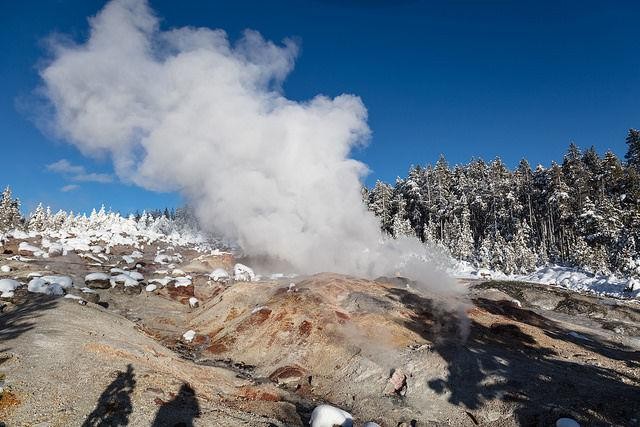After waking mysteriously for the first time in four years, the world’s tallest active geyser never went back to sleep.
Another major eruption of Steamboat Geyser was recorded in Yellowstone National Park at about 1:07 a.m., Saturday, according to seismogram data. It was the 30th eruption since March, setting a new record for total eruptions recorded in one calendar year. The next-highest total was 29 in 1964.
Jeff Hungerford, the park geologist, said he’s hoping for a few more eruptions before the year ends.
“It’s just exciting,” Hungerford said. “Steamboat being the largest eruption we know about, it’s a pretty fantastic event.”
Located in the Norris Geyser Basin, Steamboat is the tallest active geyser in the world. While minor eruptions of between 10 and 40 feet are common, the geyser’s major eruptions can reach heights between 300 and 400 feet, drenching the boardwalk around it and sometimes even the cars in the parking lot.
Park officials have recorded nearly 200 major eruptions of Steamboat since 1878. There have been long droughts in that time, including one that lasted 50 years. There have also been busy periods, including consecutive years with a dozen or more eruptions. Each year from 1963 to 1965 surpassed 20 eruptions.
“This activity is unusual, but it’s not unprecedented,” Hungerford said. “We’ve had activity like this in the early 1960s and the early 1980s.”
Prior to this year, the last known major eruption was in 2014. The first of this year was reported in March. By mid-May, five had been recorded, and they just kept coming.
Many of this year’s eruptions were separated by a week or less. A few were separated by two or three weeks. The longest break this year has been 35 days.
Hungerford and other geologists have been watching Steamboat closely throughout the summer. Early on, they put out seismic nodes to record activity just before and right after an eruption. Thermal sensors and cameras have also been placed near Steamboat.
They’re also examining precipitation data and the movement of the ground in the geyser basin, where uplift and deformation are normal.



